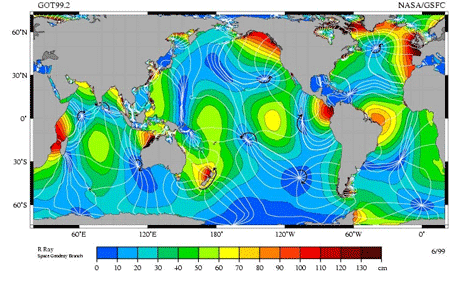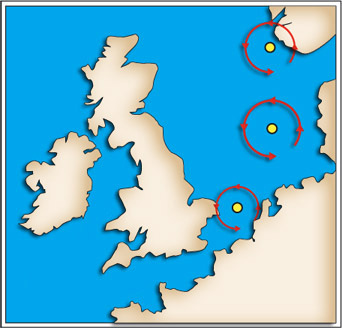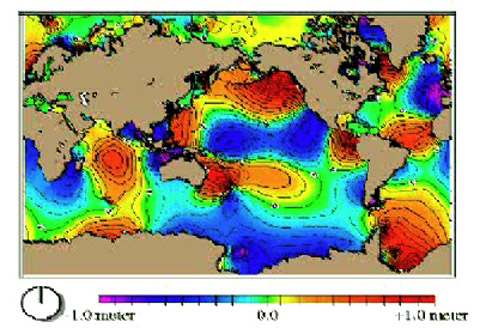The state of tidal theory.
It is a fact that tides are due to the action of the Moon and, to a lesser extent, to the action of the Sun.
For over 330 years they have wanted to attribute the tidal phenomenon to gravity. At the cost of stating that, in the case of tides, a supposed horizontal component prevails, where the attraction effect decreases with the distance raised to the cube, rather than to the square.
So, it has been stated that the tides would be due to gravity, albeit with a different formula than the normal one.
Too many inconsistencies.
And all this without addressing the fact that the unit of location of the tides is not the Earth, but various tidal basins, as I see in a video published by NASA.
Each tidal basin has its own tidal wave, which can have a bi-diurnal or diurnal frequency, and in some places even vary seasonally from diurnal to bi-diurnal.
These facts alone decisively rule out gravity as the cause of the tides.
--- 2.0.#2 ---
The phenomenon of tides.
The cumulative-dissipative processes, first discovered in seeds, also cause the phenomenon of tides. This finally allows for a much simpler theory of tides, free from the complications and exceptions of the current theory, which holds that they are due to attraction.
All aspects of the tidal phenomenon finally find simple explanations if we consider them to be due to motion relative to other matter - specifically, to the Moon and the Sun - where the effect diminishes with distance cubed, and where local magnetism is relevant.
--- 2.0.#3 ---
The characteristics of tidal waves.
There is no a single tidal wave, extending from north pole to south pole and proceeding from east to west, as would be the case if gravity were responsible.
Instead there are many tidal waves, each developing within its tidal basin, with a clockwise direction in the Southern Hemisphere and a counterclockwise direction in the Northern Hemisphere.
The formation of tidal basins is not due to the supposed tidal wave encountering an emerged land, as it is evident when a tidal basin borders another tidal basin, without being interrupted by emerged land.
Each tidal wave is autonomous with respect to the others, as is most evident in the large deep oceans that extend far from east to west (Pacific and Indian),

and in the shallow seas (e.g.: North Sea), where basins border others, without being interrupted by emerged land.

The frequency of a tide is bi-diurnal when local magnetism is normal; when it is high, however, the frequency becomes diurnal.
All this is explained better, in more detail, in the itineraries dedicated to the tides.
--- 2.0.#4 ---
Program of the six itineraries on the tides.
The first itinerary on the tides contains the typical statements supported by proponents of classical tidal theory.
In parallel with classical tidal theory, studies and approaches have developed that, in practice, though unofficially, are in fact independent of classical theory.
For my part, in the second itinerary, I clarify five points of current tidal theory that cast doubt on its validity.
In the following itineraries, 3 through 6, I propose an alternative hypothesis on the subject of tides.
